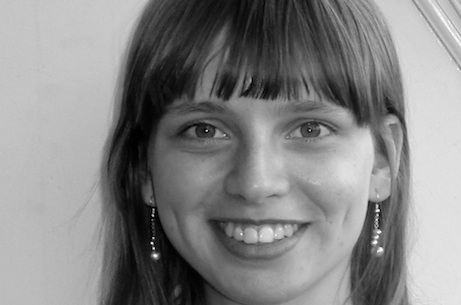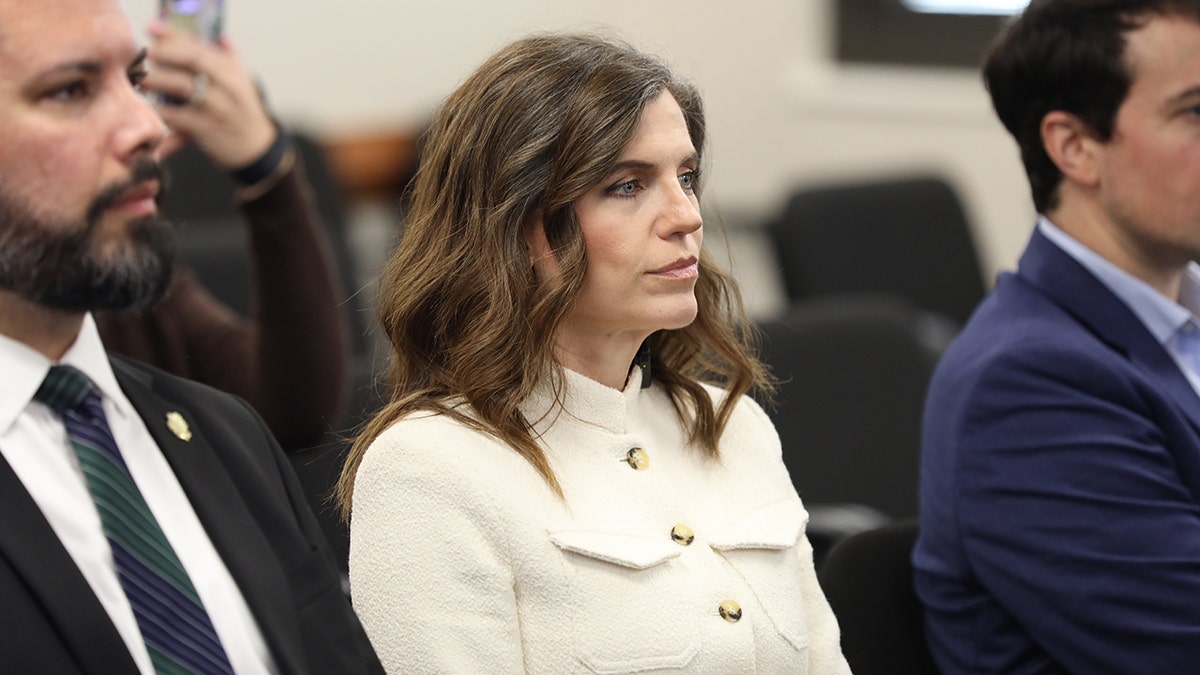Is gender equality going backwards? – gatescambridge.org

Report on the State of Global Gender Equality and its Intersection with Sustainable Development Goals
Introduction
A panel discussion featuring three Gates Cambridge Scholars assessed the current trajectory of global gender equality, concluding that progress is both fragile and non-linear. The dialogue highlighted significant regressions in several areas, which threaten the achievement of the United Nations’ Sustainable Development Goals (SDGs), particularly SDG 5: Gender Equality. With projections indicating that full gender parity is more than a century away, the discussion underscored the urgent need to address multifaceted challenges that are causing setbacks for the rights of women and girls globally.
Key Challenges to Achieving SDG 5: Gender Equality
The scholars identified several critical areas where progress towards gender equality is being undermined. These challenges intersect with multiple SDGs, demonstrating the interconnected nature of the 2030 Agenda for Sustainable Development.
Legal, Political, and Technological Setbacks
Recent legal and political shifts, coupled with the misuse of technology, pose a direct threat to fundamental women’s rights. These regressions directly impact several SDG targets:
- Undermining SDG 3 (Good Health and Well-being) and SDG 5 (Gender Equality): The overturning of established legal precedents for reproductive rights, such as Roe v. Wade in the United States, represents a significant reversal. This curtails access to sexual and reproductive healthcare, a key target under both SDG 3 and SDG 5.
- Threats to SDG 16 (Peace, Justice and Strong Institutions): The use of digital surveillance and data from the FemTech industry to police women’s reproductive choices compromises personal freedoms and data protection. This erosion of privacy and justice highlights a failure of institutions to protect vulnerable populations.
The Interplay of Climate Change and Gender Inequality
The discussion emphasized the critical link between environmental and social goals, particularly how climate change disproportionately affects women and girls.
- Impact on SDG 13 (Climate Action) and SDG 5 (Gender Equality): Research in western India demonstrates that climate change is intensifying the root causes of child marriage. Environmental pressures on agricultural communities exacerbate poverty and instability, leading families to resort to early marriage for their daughters. This directly contravenes SDG 5.3, which calls for the elimination of all harmful practices, including child, early, and forced marriage.
Socio-Cultural Barriers
Deep-seated cultural norms and the rise of reactionary movements present ongoing obstacles to achieving gender equality.
- Challenges to SDG 5 Targets: The emergence of the “manosphere” and other anti-feminist ideologies works to reverse progress in social attitudes. The discussion stressed the importance of engaging men and boys as active partners in promoting healthy masculinities and advancing gender equality, a crucial component for creating inclusive societies as envisioned in SDG 10 (Reduced Inequalities) and SDG 16.
Strategic Approaches and Scholar Contributions to the 2030 Agenda
The scholars’ research and professional work provide strategic models for addressing these challenges and advancing the SDGs.
Scholar Profiles and Contributions
-
Reetika Subramanian
A Senior Research Associate at the University of East Anglia, her work focuses on the nexus of gender and climate. Her multimedia project, “Climate Brides,” documents how climate change drives child marriage in India, providing vital data and accessible resources for grassroots organizations. This work directly supports the monitoring and implementation of SDG 5 and SDG 13 by creating climate archives from women’s traditional work songs and mapping the tangible impacts of environmental crises on gender issues.
-
William McInerney
As a peacebuilding consultant and researcher, his work advances SDG 4 (Quality Education), SDG 5, and SDG 16. He specializes in using education and storytelling to promote peace and gender equality. Through his role at the Men’s Story Project, he actively engages men and boys in dismantling harmful gender norms and preventing violence, contributing to the creation of more peaceful and inclusive societies.
-
Christine Carpenter
An international lawyer and PhD candidate, her research investigates digital surveillance and data protection within the FemTech industry. Motivated by legal setbacks to reproductive rights, her work aims to build a protective framework for the data ecosystem of FemTech products. This research is critical for upholding SDG 3 (specifically target 3.7 on universal access to sexual and reproductive health), SDG 5 (target 5.6 on reproductive rights), and SDG 16 by strengthening legal and technological institutions to protect human rights in the digital age.
Conclusion and Recommendations
The analysis concludes that the path to achieving SDG 5: Gender Equality is facing significant headwinds from legal, environmental, and socio-cultural forces. The progress made is fragile and requires constant vigilance and proactive intervention. Based on the discussion, the following actions are essential for advancing the 2030 Agenda:
- Strengthen Data Collection: A greater emphasis must be placed on gathering robust data on women’s issues to inform policy and track progress towards SDG targets.
- Protect Civic Space: Safeguarding spaces for dialogue, dissent, and advocacy is crucial for holding institutions accountable, a core principle of SDG 16.
- Promote Inclusive Engagement: Actively involving men and boys in the fight for gender equality is necessary to address root causes and foster societal change.
- Utilize Storytelling: Harnessing the power of personal narratives and multimedia storytelling can shape public discourse and build empathy, creating a more favorable environment for policy change.
Ultimately, the report affirms that achieving gender equality is not only a fundamental human right but also a catalyst for the success of all Sustainable Development Goals, benefiting everyone in society.
Analysis of Sustainable Development Goals in the Article
1. Which SDGs are addressed or connected to the issues highlighted in the article?
The article discusses multifaceted challenges to gender equality, connecting directly and indirectly to several Sustainable Development Goals (SDGs). The following SDGs are addressed:
- SDG 5: Gender Equality: This is the central theme of the article. The entire discussion, from the title “Is gender equality going backwards?” to the work of the scholars on child marriage, reproductive rights, and healthy masculinities, is focused on achieving gender equality and empowering all women and girls.
- SDG 3: Good Health and Well-being: The article explicitly mentions issues related to reproductive health. Christine Carpenter’s research was motivated by the “overturning of Roe v. Wade” and her work with the “Center for Reproductive Rights” directly addresses access to healthcare, a key component of SDG 3.
- SDG 13: Climate Action: The article establishes a clear link between climate change and gender issues through the work of Reetika Subramanian. Her project “Climate Brides” investigates “how climate change is intensifying the drivers of child marriage,” directly connecting climate impacts to the well-being and rights of women and girls.
- SDG 16: Peace, Justice and Strong Institutions: This goal is relevant through the discussion of legal frameworks, human rights, and peacebuilding. Christine Carpenter’s work as an “international lawyer” challenging abortion bans and working on “international human rights” cases, and William McInerney’s role as a “peacebuilding consultant,” connect directly to promoting just, peaceful, and inclusive societies.
- SDG 8: Decent Work and Economic Growth: The article touches upon this goal through its reference to human trafficking. Christine Carpenter’s pro bono work with the “Human Trafficking Legal Clinic to seek justice for migrant workers” relates to the fight against forced labor and modern slavery.
2. What specific targets under those SDGs can be identified based on the article’s content?
Based on the specific issues discussed, several SDG targets can be identified:
- Target 5.3: Eliminate all harmful practices, such as child, early and forced marriage.
- This target is directly addressed by Reetika Subramanian’s research project, “Climate Brides,” which “has been documenting how climate change is intensifying the drivers of child marriage in these communities.”
- Target 5.6: Ensure universal access to sexual and reproductive health and reproductive rights.
- This is highlighted by Christine Carpenter’s research, which was motivated by the “overturning of Roe v. Wade in the US,” and her work with the “Center for Reproductive Rights in proceedings challenging Texas’ SB-8 abortion ban.” These actions directly concern reproductive rights.
- Target 3.7: By 2030, ensure universal access to sexual and reproductive health-care services.
- The same points that support Target 5.6—such as the discussion of “anti-abortion crackdowns” and legal challenges to abortion bans—are directly relevant to ensuring access to reproductive health-care services under SDG 3.
- Target 13.b: Promote mechanisms for raising capacity for effective climate change-related planning and management… including focusing on women.
- Reetika Subramanian’s work, which focuses on the “intersections of gender and climate,” exemplifies this target by specifically researching and raising awareness about how climate change disproportionately affects women, particularly in the context of child marriage.
- Target 16.3: Promote the rule of law at the national and international levels and ensure equal access to justice for all.
- This is demonstrated by Christine Carpenter’s legal work. As a “practising attorney,” she focused on “international arbitration and foreign sovereign litigation matters” and maintained an “active pro bono practice of matters concerning international human rights,” including challenging laws she considered unjust.
- Target 8.7: Take immediate and effective measures to eradicate forced labour, end modern slavery and human trafficking.
- This target is addressed through the mention of Christine Carpenter’s work “with the Human Trafficking Legal Clinic to seek justice for migrant workers,” which is a direct effort to combat human trafficking.
- Target 5.b: Enhance the use of enabling technology… to promote the empowerment of women.
- The article addresses the negative side of this target, highlighting the risks. Christine Carpenter’s research on “digital surveillance and data protection in the FemTech industry” aims to “protect the data ecosystem of FemTech products from misuse and abuse,” which is a critical aspect of ensuring technology empowers rather than harms women.
3. Are there any indicators mentioned or implied in the article that can be used to measure progress towards the identified targets?
The article mentions or implies several indicators that can be used to measure progress:
- Prevalence of child marriage: Reetika Subramanian’s project “Climate Brides” documents the drivers of child marriage. The rate and incidence of child marriage, especially in climate-vulnerable areas, is a direct indicator for Target 5.3.
- Legal frameworks and access to reproductive rights: The article’s focus on the “overturning of Roe v. Wade” and “anti-abortion crackdowns” points to the legal status of abortion and the existence of laws guaranteeing reproductive rights as a key indicator for Targets 5.6 and 3.7.
- Data privacy and protection regulations: Christine Carpenter’s research on “digital surveillance and data protection in the FemTech industry” implies that the existence and enforcement of laws to protect user data in this sector is a measurable indicator for Target 5.b.
- Number of human trafficking victims assisted: The mention of working with the “Human Trafficking Legal Clinic to seek justice for migrant workers” implies that the number of cases litigated or victims who receive justice can be used as an indicator for Target 8.7.
- Time projection for gender parity: The article explicitly states that “full gender parity is still reported to be over 123 years away.” This time-based projection, often derived from composite indices like the Global Gender Gap Index, serves as a high-level indicator of overall progress on SDG 5.
- Availability of gender-specific data: The statement that there is a need for more “data on women’s issues” implies that the availability and quality of gender-disaggregated data is a crucial indicator for monitoring and achieving gender equality.
4. Summary of SDGs, Targets, and Indicators
| SDGs | Targets | Indicators (Mentioned or Implied in the Article) |
|---|---|---|
| SDG 5: Gender Equality | 5.3: Eliminate all harmful practices, such as child, early and forced marriage. | Prevalence and drivers of child marriage, particularly in the context of climate change. |
| SDG 5: Gender Equality | 5.6: Ensure universal access to sexual and reproductive health and reproductive rights. | Legal status of abortion and reproductive rights (e.g., Roe v. Wade, Texas’ SB-8 ban). |
| SDG 5: Gender Equality | 5.b: Enhance the use of enabling technology… to promote the empowerment of women. | Existence of data protection frameworks for FemTech to prevent misuse and abuse of data. |
| SDG 3: Good Health and Well-being | 3.7: Ensure universal access to sexual and reproductive health-care services. | Legal and practical access to abortion and reproductive health services. |
| SDG 13: Climate Action | 13.b: Promote mechanisms for… climate change-related planning… focusing on women. | Research and projects focusing on the intersection of climate change and gender issues (e.g., “Climate Brides”). |
| SDG 16: Peace, Justice and Strong Institutions | 16.3: Promote the rule of law… and ensure equal access to justice for all. | Litigation and legal challenges concerning international human rights and reproductive rights. |
| SDG 8: Decent Work and Economic Growth | 8.7: Take immediate and effective measures to eradicate… human trafficking. | Legal actions and support for victims of human trafficking (e.g., work of the Human Trafficking Legal Clinic). |
Source: gatescambridge.org

What is Your Reaction?
 Like
0
Like
0
 Dislike
0
Dislike
0
 Love
0
Love
0
 Funny
0
Funny
0
 Angry
0
Angry
0
 Sad
0
Sad
0
 Wow
0
Wow
0











































































